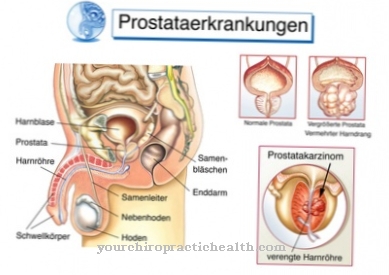Under certain circumstances, fluids accumulate in the body, which can be harmful to health. These are, for example, blood or gases that accumulate as a result of accidents, operations or illness. A Chest drain directs the substances outwards.
What is the chest tube?

A drainage is a hose that represents a connection between the liquid accumulation and a collecting container. While drains can in principle be placed throughout almost the entire body, chest drains are only used for problems in the chest area. In general, the term encompasses a larger number of measures for draining liquids.
More often, the word thoracic drainage refers exclusively to the pleural drainage. Here a tube is placed between the pleura and the pleura. On closer inspection, the medical material is in the pleural space, which is where its name comes from. In certain circumstances it is also necessary to drain fluids in the space between the lobes.
This area contains important organs such as the heart, trachea and esophagus. The region between the lungs is called the mediastinum, the medical name of the pericardium is pericardium. Depending on its location, the thoracic drainage can take on different terms: mediastinal drainage, pericardial drainage or pleural drainage.
Function, effect & goals
As soon as certain substances such as blood, air or pus collect in the pleural space, a chest drainage becomes necessary. Otherwise, the lungs can no longer develop sufficiently, which can result, for example, in severe shortness of breath. If there is a large amount of fluids, arteries and veins to the heart can also become restricted. A poor blood supply has further medical consequences because the blood cells are the carriers of the oxygen that all structures in the human organism need to work.
The accumulation of liquids increases the pressure. Such a situation is life-threatening, but can be avoided with a chest tube. The goals of such a treatment are therefore to remove all substances from the chest that are harmful to health. In addition, this is intended to reduce the pressure that occurs or prevent it from the outset in planned situations such as an operation. There are certain diseases in which a chest drain is necessary. These include, for example, pneumothorax and tension pneumothorax. Air may enter the pleural space due to a rib injury or a surgical procedure that requires an open chest. The starting point is an injury to the lungs. The condition manifests itself as shortness of breath, pain and a racing heart.
As soon as air gets into the pleural space during inhalation, but cannot escape during exhalation, a life-threatening situation may develop. For example, the compensation is hindered by tissue that had shifted before the injury. In this way, the pressure can increase without restriction, so that the heart can no longer perceive its function. The hemothorax is the accumulation of fluid in blood. This penetrates the lungs through injuries to the blood vessels. Accidents or lung cancer can cause the veins to tear.
Not only does it cause pain and shortness of breath, if the condition persists, blood loss also increases. Rapid application of a chest tube can save the patient's life. In very serious cases, however, an additional operation may be necessary. As part of a pleural empyema, the doctor finds pus in the pleural space. Among other things, this gets into the chest via infections that have developed after an operation or pneumonia. A thoracic drain is used here to drain the fluid. On the other hand, flushing the chest with a saline solution through the drainage helps to bring the inflammation under control.
You can find your medication here
➔ Medicines against edema and water retentionRisks, side effects & dangers
The advantages of chest drainage cannot be overlooked. In certain situations they are quite capable of saving the patient's life. However, a chest tube is not entirely risk-free. The rib muscles and pleura must be opened so that the tube can be positioned correctly. The lower edge of each rib is accompanied by the course of an artery, vein, and nerve. The structures can be injured by a thoracic drain, especially if it has to be relocated under time pressure.
For example, an injury results in bleeding and, in more severe cases, abnormal sensations that result in numbness as soon as a nerve is restricted in its function. Furthermore, it cannot be ruled out that the hose injures surrounding structures of the body during insertion. Because these are important organs such as the heart, artery, and windpipe, the consequences can be severe. If the insertion of a chest drain is not successful, most doctors usually go straight to an emergency operation. Another risk is the wound caused by the chest drain. Bacteria or other pathogens can accumulate here and lead to infections.
As soon as redness or swelling becomes noticeable in the area of the injection site, a doctor should be made aware of the change. The same applies to a sudden greater discharge of fluids. These may indicate more bleeding and should be checked by a doctor. Thus, a chest drain is not exclusively a profitable procedure. However, in a life-threatening situation, the benefits usually outweigh the potential disadvantages.













.jpg)

.jpg)
.jpg)











.jpg)